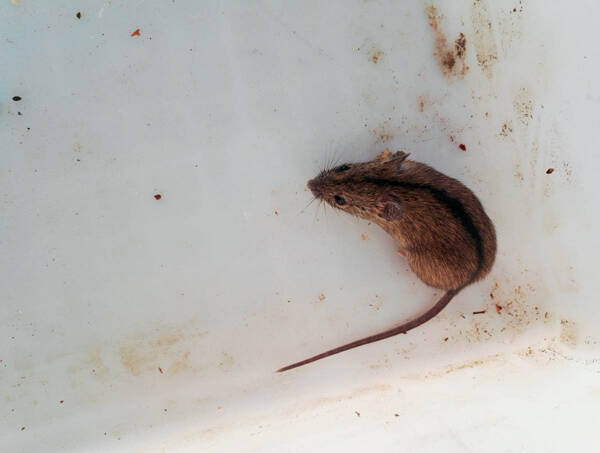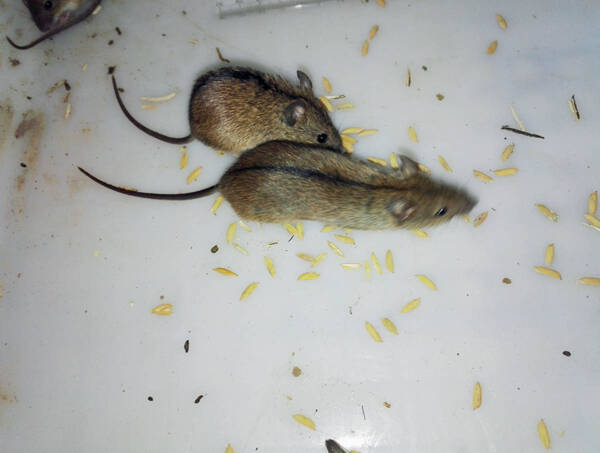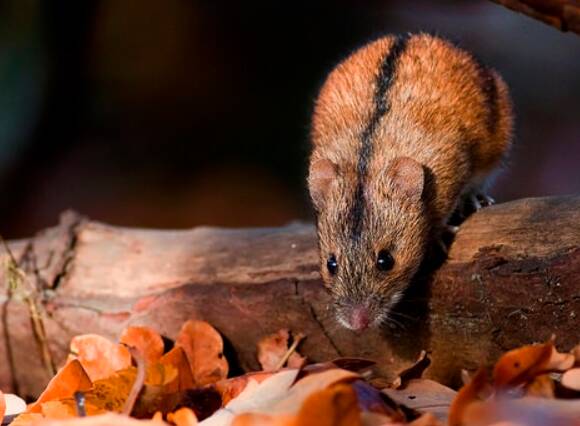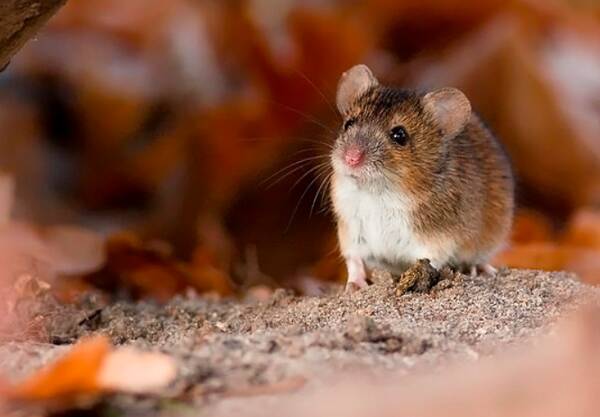Apodemus agrarius
IUCN
LCBasic Information
Scientific classification
- name:Apodemus agrarius
- Scientific Name:Apodemus agrarius,Field mouse, black-lined mouse, long-tailed black-lined mouse
- Outline:Rodents
- Family:Rodentia Muridae Apodemus
Vital signs
- length:65~117mm
- Weight:About 100g
- lifetime:
Feature
There is a distinct vertical black stripe in the middle of the back, starting from the top of the head between the two ears and ending at the base of the tail, which is how the black-striped field mouse got its name.
Distribution and Habitat
It is widely distributed in China, except Tibet, Qinghai and Hainan. It is distributed in most of Europe, the Korean Peninsula and Siberia in Russia.
The black-striped field mouse has a wide range of habitats. It likes to live in sunny, humid and water-close places. In agricultural areas, it often lives in ridges, earthen embankments, forest edges and open spaces between fields at an altitude of 225 to 1670 meters. In forest areas, it lives in meadows, valleys, vegetable fields and firewood stacks in residential areas, and often enters residential houses to spend the winter.
Appearance
The individuals are small, generally between 80-110mm. The tail length is slightly shorter than the body length. Its distinctive features are: there is a black line in the center of the back, and the back of the body is grayish-yellow in color. The ventral base of the hair is gray and the tip of the hair is grayish white. The dorsal and ventral boundaries are relatively clear. However, in southern my country, such as Fujian, Zhejiang, Guangdong, Guangxi and other provinces, the black line on the back is not obvious, and some individuals even have only a dark area.
Details
The black-striped field mouse is a small rodent with a slender and agile body. It belongs to the subfamily Murinae. There are 21 species of the genus Apodemus in the world, 9 of which are in China, and the black-striped field mouse is one of them. It is mainly distributed in farmland, shrubs and grass at low altitudes. It is harmful to agriculture.

After the sowing of farmland in spring and during the germination period of crops, black-striped field mice often sneak into the fields to move around. As the seedlings continue to grow, they gradually move to the grasslands, ridges, and earthen embankments around the farmland. When the crops are ripe and harvested, they move back to the cut crops.
The diet of the black-striped field mouse is quite diverse, but mainly consists of plant food. The diet often changes with the seasons. In autumn and winter, it mainly consists of seeds, supplemented with plant roots and stems. In spring, after plowing and sowing, it steals seeds and young seedlings. In summer, it eats the green parts of plants, fruits and vegetables, and preys on insects.

The burrow system of the black-lined field mouse generally has 3 to 4 holes, and there are also dark windows. The diameter of the hole is 2.0 to 2.5 cm. When the tunnel goes down to 40 to 60 cm underground, it turns parallel to the ground or slightly downward. There is an expanded nest room or warehouse at one end or in the middle of the tunnel. The total length of the tunnel does not exceed 2 meters. The nest room is less than 1 meter from the ground, with soft bedding inside, and food and grass seeds are often stored in the warehouse. In autumn, temporary holes and long-used caves of black-striped field mice can often be found under haystacks for haymaking or storage.
Black-striped field mice have strong reproductive capacity, with 3 to 5 litters per year, 4 to 8 pups per litter, with 5 pups being the most common, and up to 10 pups. The pups mature in 3 months, and have an average lifespan of about 1.5 years.

The damage caused by the black-striped field mouse is mainly manifested in stealing seeds during the crop sowing period, and gnawing on the nutritional organs and fruits of crops during the growth and maturity periods. The black-striped field mouse is an important dominant mouse species in rice-growing areas and other humid agricultural areas. It often steals seedlings, seeds, fruits, melons, fruits, and vegetables of various crops. Generally, it bites off the stalks of crops and eats the fruits of crops. The damage to crops, such as rice, wheat, and corn, can last from the sowing period to the maturity period. In vegetable fields and protected areas, it often steals vegetables, seeds, and seedlings. At the same time, because it often moves indoors and is an important host of epidemic hemorrhagic fever and leptospirosis, it spreads as many as 17 diseases.

This species is listed in the 2013 Red List of Endangered Species of the World Conservation Union (IUCN) ver3.1—Vulnerable (VU).
It has been included in the "List of Terrestrial Wildlife with Important Economic and Scientific Research Value under State Protection" issued by the State Forestry Administration of China on August 1, 2000.








